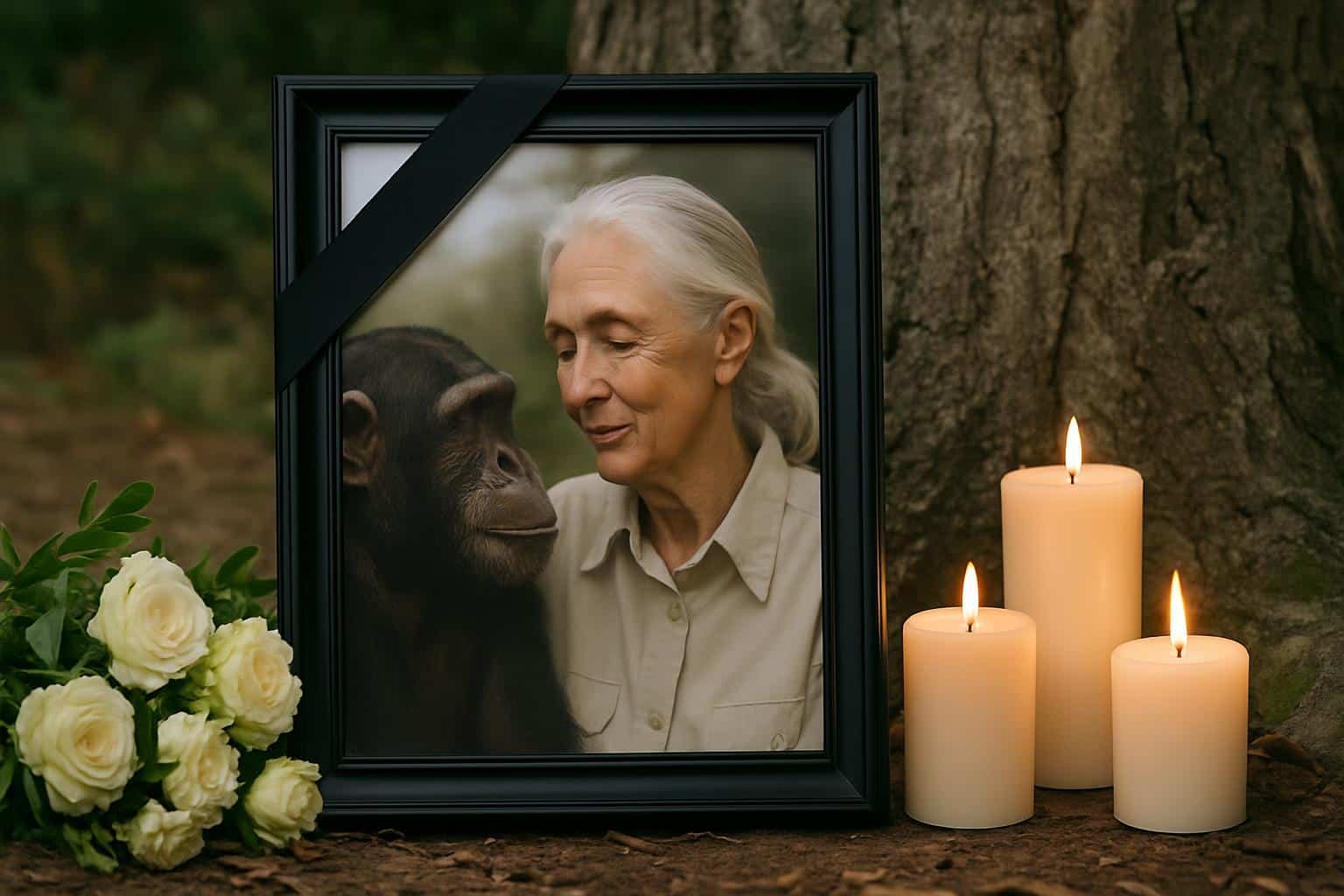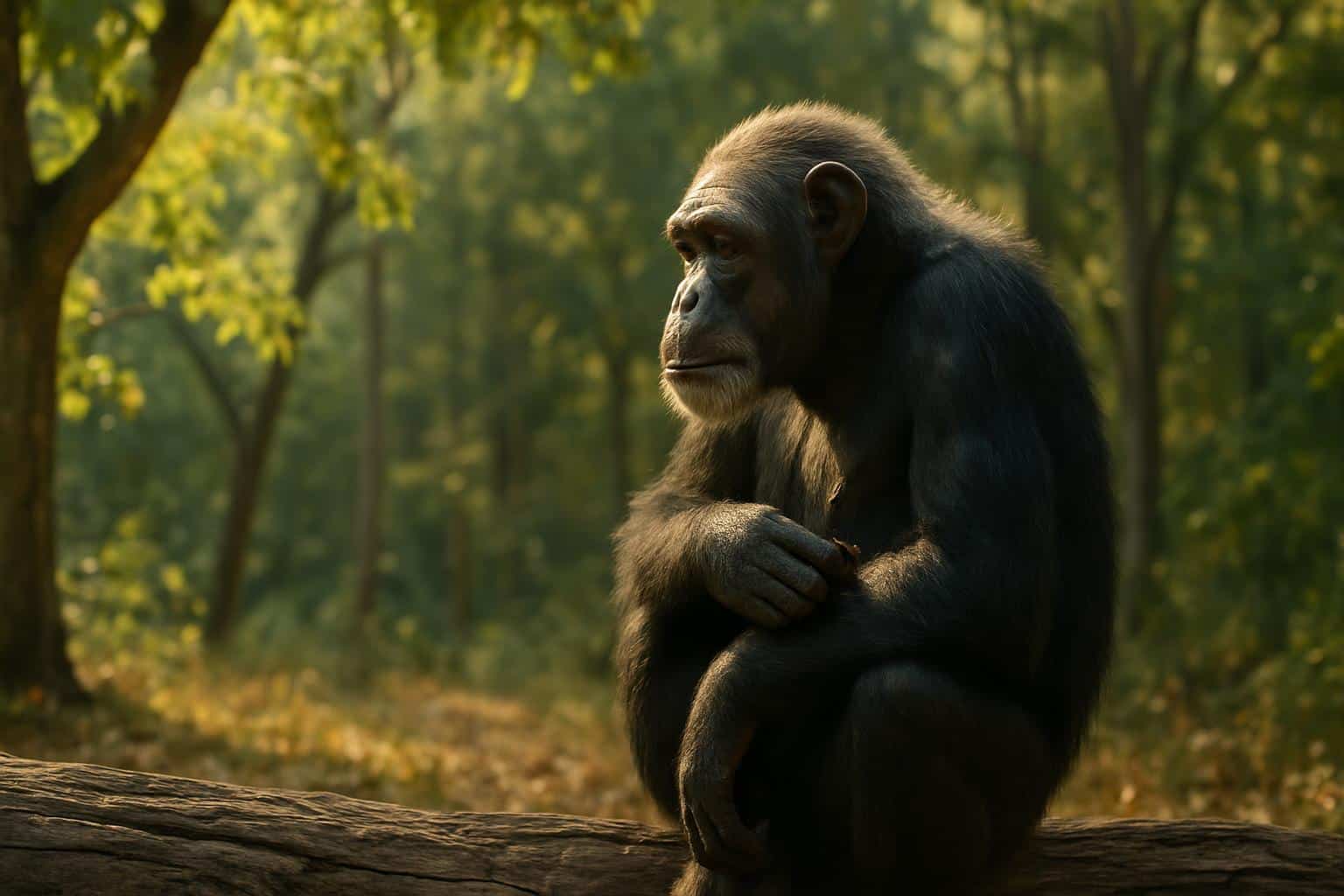Dr. Jane Goodall, the groundbreaking primatologist whose holistic, long-term research on wild chimpanzees shattered conventional wisdom about humankind’s genetic identity and purposes in nature when she was only in her 20s, has died at 91. She died in her sleep, quietly, the Jane Goodall Institute said. From research labs to classrooms and networks of conservation around the world, tributes are pouring in for a scientist who broke down barriers in what the world has come to know about our nearest living relatives — and by extension ourselves.
A Scientist Who Changed What It Meant to Be Human
Goodall first came to what would become Gombe Stream National Park in 1960 as a student of paleoanthropologist Louis Leakey, part of the legendary “Trimates” also comprised of Dian Fossey and Biruté Galdikas. With legendary patience, she recorded termite-fishing — chimps selecting and modifying twigs to extract insects — shattering the reigning orthodoxy that toolmaking was a uniquely human activity. She quickly captured hunting of colobus monkeys, meat sharing, coalition politics and intercommunity conflict, with behavior nearly as complex as it was dismaying.

Her insistence on naming individual animals — David Greybeard, Flo, Fifi and others — was controversial at first, but it retained the grain of real lives and led to discoveries about personality differences, maternal care and social bonds that sterile numbering might have missed. It preserved the grain of real lives and also made clear that our relative understandings all depend in some way on discounting what is mercurial and unexpected about an animal like a chimpanzee. In time, the methodology bore out its rigor: Gombe is now the longest-running study on wild chimpanzees, more than six decades long, and with hundreds of peer-reviewed papers across fields from primatology, genetics and disease ecology.
Goodall not only didn’t have a college degree when she started her fieldwork, but she eventually received a PhD in ethology from the University of Cambridge in an unusual trajectory in British academia. Her early insights, amplified by reporting and film work for National Geographic, have inspired a reexamination of the human-animal divide and sown a generation of research in comparative cognition.
From Gombe to Conservation Efforts Around the World
Goodall’s revolution in science flowed directly into activism. She put that vision into practice in 1977, opening the Jane Goodall Institute to enable community-based conservation across Africa, linking habitat preservation with livelihoods, education and local governance. The approach — one that relied upon land-use planning, participatory mapping and support for sustainable agriculture — helped to get the forests around Gombe under control and paved the way for similar models in the Congo Basin.
She has since started Roots & Shoots, a youth program that is active in over 60 countries and allows students to conceive sustainable local projects focusing on wildlife protection, climate adaptation or community wellness. From reforesting riparian corridors to reducing plastic waste in coastal towns, its alumni represent a pipeline of scientists, rangers and advocates steeped in Goodall’s ethic of practical hope.

Honors, Influence and a Steady Voice Across Decades
Goodall’s advocacy rarely paused. Far into her later years she maintained a punishing travel schedule, frequently described as nearing 300 days a year, desiring to talk to policymakers, students and local leaders about wildlife trafficking, habitat loss and the climate crisis. She was named a United Nations Messenger of Peace, a Dame Commander of the Order of the British Empire, and received the U.S. Presidential Medal of Freedom and the Templeton Prize, among other honors.
The stakes she stressed are still stark. Chimpanzees are listed by the International Union for Conservation of Nature as an Endangered species, with between 170,000 to 300,000 living in fragmented ranges across West and Central Africa. Her field work informed efforts to close bushmeat trade routes, enhance protected area management, and raise community stewardship as an underpinning for biodiversity policy.
Colleagues often note that Goodall united clear-eyed empiricism with moral clarity. She implored scientists to turn findings into action and pressured the conservation sector to monitor success not just in hectares protected but also in the health and agency of the people who share landscapes with wildlife. “Only if we know can we care; only if we care will we help; only if we help shall all be saved,” she was fond of telling audiences.
Tributes and a Living Legacy That Continues to Inspire
Memories collected from universities, conservation NGOs and former students testify to Goodall’s unique combination of patience, precision and optimism. “I suspect it will go on,” said Jane Goodall Institute leaders and partners, who emphasized that the long-term monitoring she championed — and the community partnerships she helped build — will continue, carrying with them datasets and local alliances necessary for real conservation to be possible.
Goodall is survived by a sister, Judy Waters; her son, Hugo Eric Louis “Grub” van Lawick; and grandchildren including Merlin, Angel and Nick. For millions who experienced her work — in a field camp sketch, in a Roots & Shoots project or in a talk that turned curiosity into conviction — her legacy persists wherever forests are defended and young people invited to lead.

